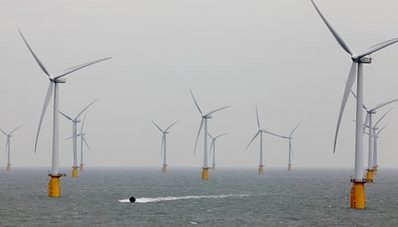Offshore wind turbines could provide renewable electricity to electric boats and marine vessels after two projects won a share of the United Kingdom’s £23 million green maritime demonstration funding.
In one proposal, an all-electric charge-point would be connected to an offshore wind turbine. Working in a similar way to a roadside electric vehicle charging station, sailors of electric-powered vessels would be able to moor up to the wind turbine chargepoint, plug in, charge up, and sail on.
Another winning initiative involves a mobile recharge barge. The barge would take electricity from an offshore wind farm at times of low grid demand, store it in onboard batteries, and then deliver power to third-party vessels.
Offshore Renewable Energy (ORE) Catapult is a research centre involved in consortiums for the two projects.
“We must ensure that offshore wind plays a key role in forging the emerging clean maritime industry of the 21st Century, driving rapid innovation, improving sustainability and levelling up through the creation of high-value jobs in key maritime clusters across the UK”, ORE Catapult partnership manager Stuart Barnes said.
The projects were just two of fifty-five green maritime projects to share in the funding, part of Prime Minister Boris Johnson’s “Jet Zero and greener maritime” and one of ten points in his plan for a green industrial revolution, unveiled in November last year.
UK transport secretary Grant Shapps said in a statement, “as both a potential producer and user of clean fuels, the UK’s offshore wind industry is in a unique position to act as a springboard for that broader maritime decarbonisation.”
The UK government is committed to zero emissions ships operating commercially by 2025 and establishing the country as a world leader in clean maritime.
The successful projects were announced during London International Shipping Week, a week where the UK called on the maritime sector to achieve “absolute zero” emissions by 2050.
Another winning project was a world first green submarine project involving autonomous underwater vessels powered by green hydrogen.
While Australia has yet to realise its offshore wind potential, others have also been looking at innovative ways to tap into the opportunity. Examples include Japanese company PowerX which is looking at transferring electric power from offshore turbines via battery ships.

Petra Stock is a Master of Journalism student who has worked in climate change, renewable energy and transport. She also works part-time in climate change for the Australian Conservation Foundation.

